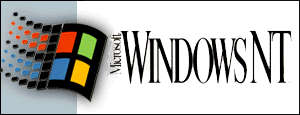


About the Microsoft Business Systems Technology Series
The Microsoft® Business Systems Technology Series consists of a number of interrelated white papers dedicated to educating information technology (IT) professionals about Windows NT and the Microsoft BackOffice™ family of products. While current technologies used in Microsoft products are often covered, the real purpose of this series is to give the reader an idea of how major technologies are evolving, how Microsoft is using those technologies, and what this means to IT planners.
This paper provides a technical overview of Windows NT for the information technology (IT) professional with a strong background in Unix. It approaches the subject from the Unix point of view and relates the concepts of Windows NT to corresponding ones found in Unix. It begins with a technical comparison of the two operating systems, moves on to cover how the two can coexist in a heterogeneous environment, and finishes with a brief section describing some of the tools available to aid developers in creating applications for both platforms.
Companies today are actively re-engineering their information technology (IT) organizations to become closely integrated with mainline business processes. To keep pace with the rapidly changing business environment, organizations must move forward while, at the same time, leveraging their investment in existing systems. For many, integration between Unix® and the Microsoft® Windows®-family of operating systems, especially Windows NT™, has become a critical success factor.
This paper is written for IT professionals with a strong background in Unix. It begins by describing the architecture of Windows NT in a technical framework that is common to Unix. This section also serves to bridge the gaps in terminology between Windows NT and Unix. The paper then moves on to describe many of the integration tools that enable the two operating systems to function in a heterogeneous environment. The final section covers tools and strategies to help with software development targeted for both Windows NT and Unix. The appendices serve as a comprehensive reference for the paper and point the reader in the direction of other pertinent material.
It was the best of operating systems, it was the worst of operating systems, it was the age of wisdom, it was the age of foolishness, it was the epoch of belief, it was the epoch of incredulity, it was the season of light, it was the season of darkness, it was the spring of hope, it was the winter of despair, we had everything before us, we had nothing before us, in short, we had Unix.
Life with Unix tends to be a love-hate relationship, with most people falling strongly on one side or the other. This paper is about another operating system, Windows NT, that, although relatively new, has roots that stretch back almost as far as those of Unix. It is an operating system that, like most, owes much to Unix. But it also strays markedly from it in both design and philosophy.
This paper is written specifically for you, the IT professional with a strong background in Unix. It approaches Windows NT from the Unix perspective. It begins with a brief look at the pedigree of both operating systems, progresses to a technical comparison of the two, moves on to show how Windows NT and Unix can peacefully coexist in a heterogeneous world, and finishes with a discussion about tools that are available to aid developers working in both environments.
This is a technical paper, and it is assumed that you have a good working knowledge of Unix and have at least seen a computer running Windows. No attempt will be made to teach fundamentals here. However, "Appendix A: Assistance" lists resources that can help you fill in the gaps.
Throughout the paper you will see reference to Windows, which is the Microsoft operating system. Do not confuse this with the Unix X Window System™, also known as X Windows or just X. Windows will be used to refer to Microsoft Windows, and X will be used to refer to the Unix X Window System.
Windows NT and Unix address the same world, but from very different points of view. It is a mistake to assume that Windows NT provides a direct, feature-for-feature replacement for Unix. It does not. It represents a different perspective, a paradigm shift, and, as such, offers fresh solutions to some very old, chronic problems.
You may download the complete White Paper on "Microsoft Windows NT from a UNIX Point of View." The document is large, so on a slow modem this may take some time.
The document was created in Microsoft Word for Windows 6.0. The file has been compressed into a self-extracting zip file. This means by double-clicking on the above download the file will be copied to your computer's directory/folder. You will have to double-click on the .exe to extract the document. If you do not have Microsoft Word, or a compatible word processing program, you can download a free copy of the Microsoft Word Viewer that runs on the Windows and Windows NT platforms. This will allow you to view and print Word documents without having Microsoft Word on your system.
For information on the Microsoft Word Viewer and to download a free copy of this tool.
